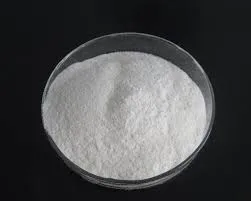
Oct . 05, 2024 09:11 Back to list
hpmc grades and uses
HPMC Grades and Their Uses
Hydroxypropyl methylcellulose (HPMC) is a versatile chemical compound widely utilized in various industries due to its unique properties. Being a cellulose derivative, HPMC possesses a remarkable combination of hydrophilicity, viscosity, and film-forming capabilities. These characteristics make it an essential ingredient in pharmaceuticals, food, cosmetics, and construction materials. To optimize its application across different fields, HPMC is available in various grades, each suited for specific uses.
Understanding HPMC Grades
HPMC grades are primarily categorized based on their viscosity, polymerization degree, and the proportion of hydroxypropyl and methoxy groups present. The viscosity of HPMC is a critical factor that influences its performance in different applications. High-viscosity grades are typically used for thickening agents or gelling agents, while lower-viscosity grades work effectively as stabilizers or binders.
These grades often fall under three major classifications 1. Low Viscosity Grades These are used in applications that require minimal thickening, providing smooth textures without inhibiting flow. Low viscosity HPMC is commonly found in products like sauces, salad dressings, and cosmetic formulations.
2. Medium Viscosity Grades This category balances the thickening and flow properties, making it suitable for various applications. In the pharmaceutical industry, medium viscosity HPMC plays a crucial role in formulating tablets and controlled-release systems, ensuring a steady release of active pharmaceutical ingredients.
3. High Viscosity Grades These grades provide significant thickening and gelling capabilities. They are extensively used in products that require a sturdy gel-like texture. High viscosity HPMC can be found in applications such as gel coatings, adhesives, and certain hair styling products.
Applications of HPMC
hpmc grades and uses

The versatility of HPMC makes it an integral component across numerous sectors
1. Pharmaceuticals In the pharmaceutical industry, HPMC is utilized as a binder, film-former, and controlled-release matrix material. It is commonly employed in tablet formulations, enabling improved swallowability and enhanced drug delivery profiles.
2. Food Industry HPMC serves as a food additive, offering emulsification, stabilizing, and thickening properties. It is particularly prevalent in gluten-free baking, allowing improved texture and moisture retention in baked goods.
3. Cosmetics and Personal Care In cosmetics, HPMC acts as a thickener and emulsifier, providing desirable textures in creams, lotions, and gels. Its film-forming ability also makes it popular in hair care products, offering hold and style durability without flaking.
4. Construction HPMC is widely used in construction materials, particularly in mortars and tile adhesives. It enhances workability and water retention, allowing for extended application times and improved bonding.
Conclusion
In conclusion, the versatility of hydroxypropyl methylcellulose, available in different grades, enables it to cater to a diverse range of applications across multiple industries. Its unique properties provide significant advantages, from enhancing texture in food products to enabling controlled drug release in pharmaceuticals. Understanding the various grades of HPMC is essential for manufacturers and formulators who aim to leverage its benefits effectively. As innovation continues, the potential applications of HPMC are likely to expand, solidifying its position as a critical component in modern formulations.
-
Versatile Hpmc Uses in Different Industries
NewsJun.19,2025
-
Redispersible Powder's Role in Enhancing Durability of Construction Products
NewsJun.19,2025
-
Hydroxyethyl Cellulose Applications Driving Green Industrial Processes
NewsJun.19,2025
-
Exploring Different Redispersible Polymer Powder
NewsJun.19,2025
-
Choosing the Right Mortar Bonding Agent
NewsJun.19,2025
-
Applications and Significance of China Hpmc in Modern Industries
NewsJun.19,2025







